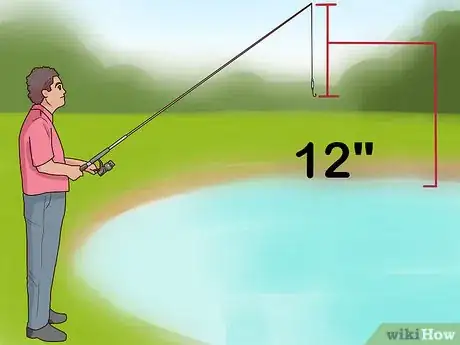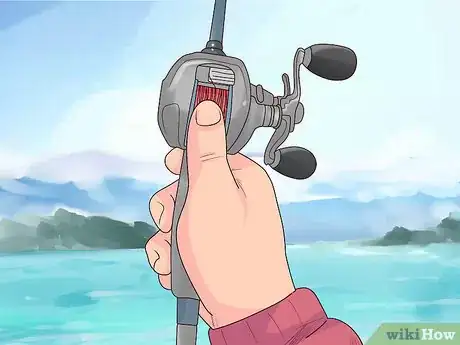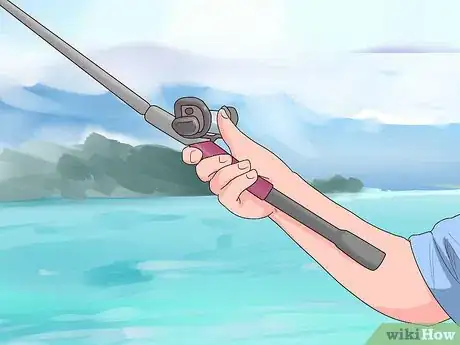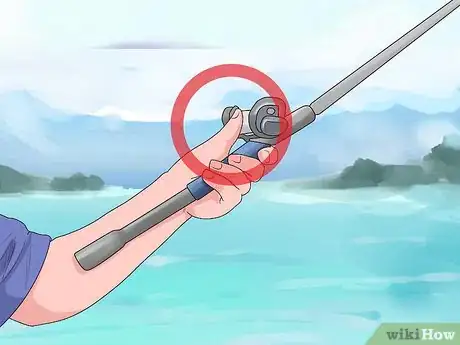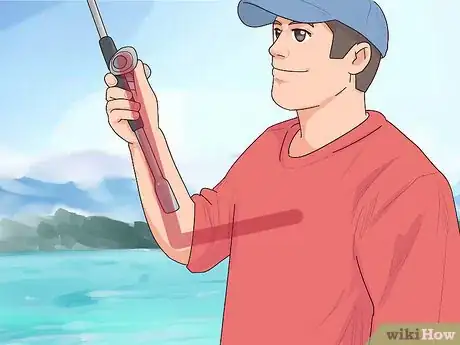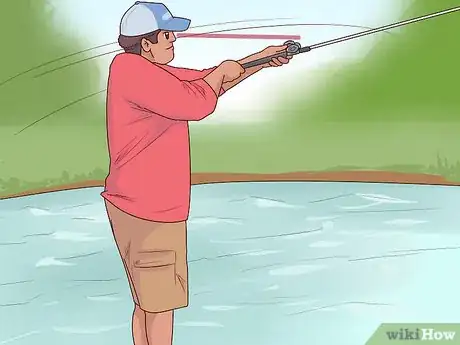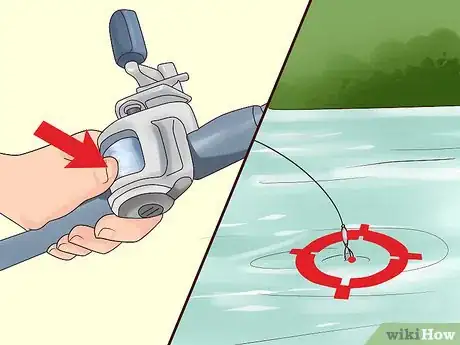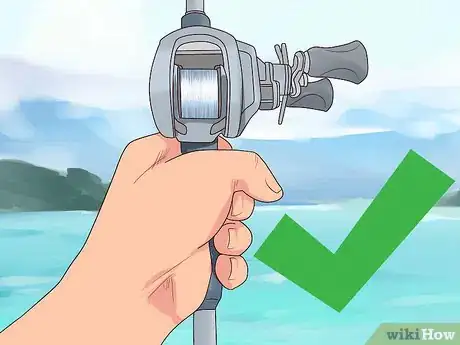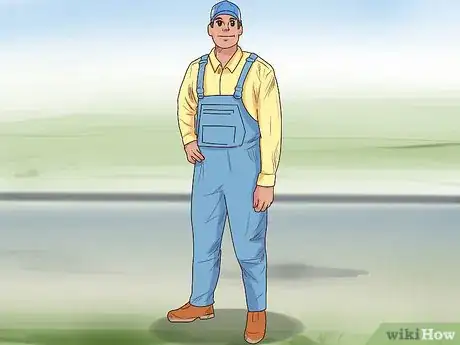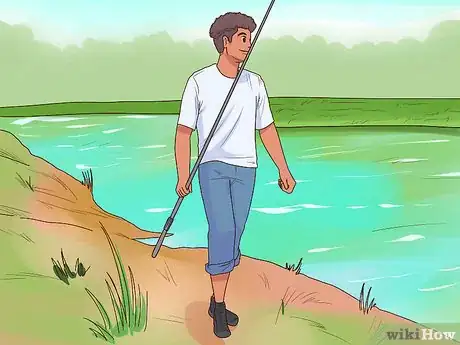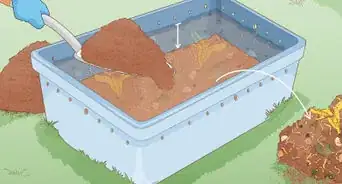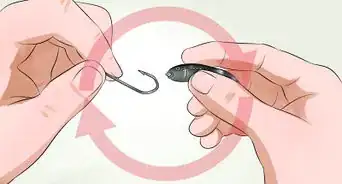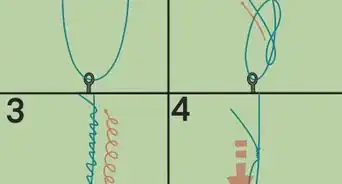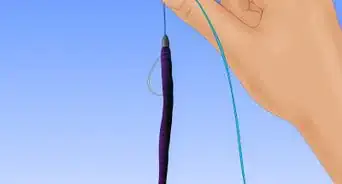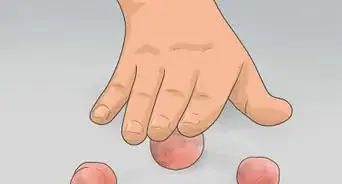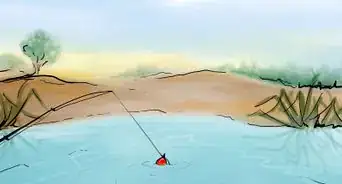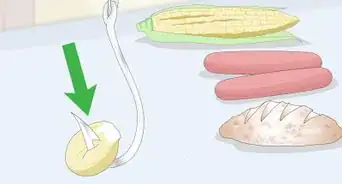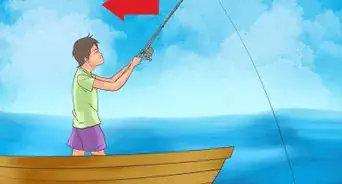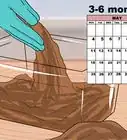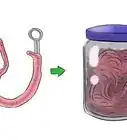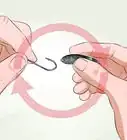This article was co-authored by Michael Reynolds. Michael Reynolds is a Professional Fishing Instructor and the Owner of Long Beach, California Fishing Lessons by Michael Reynolds. In his over 40 years of fishing experience, Michael has become very knowledgeable about the variety of fishing methods and techniques. He is passionate about sharing his knowledge with beginners to experienced anglers. Michael has been guiding and teaching fishing for over five years and is licensed and bonded with the Department of Fish and Wildlife (DFW).
There are 16 references cited in this article, which can be found at the bottom of the page.
wikiHow marks an article as reader-approved once it receives enough positive feedback. This article received 12 testimonials and 82% of readers who voted found it helpful, earning it our reader-approved status.
This article has been viewed 283,352 times.
Baitcasting reels date back to the mid-17th century and first became popular in the 1870s. They are suited best to fishing for larger freshwater fishing species such as largemouth bass, northern pike, and muskellunge. Larger sizes are used for trolling for large saltwater fish such as marlin and tuna. Casting with baitcasting tackle can be difficult for first-time anglers to get the hang of, but can be mastered with practice.[1]
Steps
Casting the Reel
-
1Reel in the line. Reel the line in until your bait or lure is 6 to 12 inches (15 to 30 centimeters) from the rod tip. If you have a sinker or bobber attached to the line, it should be 6 to 12 inches from the rod tip instead.
-
2Hold the reel properly. Grip the rod behind the reel with your thumb resting over the reel spool. Baitcasting rods are designed the same as spincasting rods, and as with spincasting rods, most fishermen cast with the same hand they retrieve with, so if you prefer to hold the rod behind the reel when you retrieve, you'll need to switch hands when you cast.[2]
- You may want to rest your thumb at a slight angle on the spool instead of pressing the very flat of it on the line. This will give you more control over the flow of the line during the cast.[3]
Advertisement -
3Turn the rod so the reel handles point up. As with spincasting gear, this lets you use your wrist when you cast. If you cast with your opposite hand, the handles should point down.
-
4Press the reel spool release button. Baitcasting reels made since the 1970s have a mechanism to disengage the reel spool from the handles so they don't turn during the cast, allowing for longer casts. The first such models had the button on the side of the reel; most models today feature a release bar behind the spool that you press with your thumb when you rest it on the reel spool.[4] [5]
-
5Bend your casting arm. You need to bend your casting arm at the elbow so that the crook of your arm begins to approach a right angle. As you do, raise your rod until its tip goes slightly past vertical. This will give you the correct positioning to send the line out.
-
6Sweep the rod forward until it reaches eye level. This is about 30 degrees above horizontal, or the "10 o'clock" position. As you do so, lift your thumb off the reel spool enough so that the weight of your bait or lure pulls line off the spool as it is propelled toward the target.[6]
- If you are casting with a long-handled baitcasting rod of the kind used in saltwater fishing, you'll want to use your opposite hand as a fulcrum from which to pivot the rod as you cast.
-
7Press down on the reel spool with your thumb to stop the bait when it reaches the target.[7] This is similar to pressing the button on a spincasting reel to brake the line; however, not applying your thumb soon enough leads to the spool continuing to turn after your bait hits the water, creating an overrun or "birds nest" that you'll have to straighten out before you can retrieve your lure.[8]
Gathering the Right Equipment
-
1Choose a baitcasting reel. Newer models have several features, like the cast control brake and friction cast control, that might be lacking in older models.[9] [10] But the most important thing when choosing a baitcasting reel is to pick one that feels good in your hand and fits your fishing needs. Go to a store that sells baitcasting reels and hold a few. Or, if you prefer the older models, try finding one at an antique shop.[11]
-
2Choose appropriate bait. Baitcasting tackle is not suited for casting baits or lures weighing a quarter ounce or less. If you like to take several rods with you when you fish, carry a rod with a spincasting reel for the lighter weight lures and a rod with a baitcasting reel for the heavier lures.[12]
-
3Get some protective waders. Fishing waders can offer protection from the cold water you’re fishing in, from accidentally snagging your skin with a bad cast (especially while you’re learning), or from various cuts and bruises if you accidentally take a tumble.[13]
Choosing a Location
-
1Practice away from water. Practice your casting techniques away from the water as well as on it. Away from the water, replace your bait or lure with a rubber practice plug or metal sinker. Practice in an open area, away from overhead trees.[14]
-
2Avoid heavy brush. When you are choosing an area to cast in, pick a place that has minimal brush, especially overhead. Your bait can get easily caught in the branches and this will cost you much precious time to retrieve.[15]
- It’s important to avoid heavy brush or your lure may get stuck when you bring the rod forward to cast. If this happens, the entire spool of line can get tangled (called a bird’s nest) and destroyed.
-
3Choose an isolated location. It can be dangerous to try baitcasting in a place where too many people are around. You have to constantly make sure no one is behind you or too close to you in order to make sure you don’t accidentally snag them with your lure. And being hyper aware of your surroundings takes away some of the relaxing joy of baitcasting anyways.[16]
Expert Q&A
-
QuestionI did this and my line bird nested as soon as I casted it out. What did I do wrong? And is there any way to get a bird's nest out without cutting the line?
 Kody LeeKody Lee is a Guide for Fishing Trips in Washington. He has worked as a guide since 2015 and has fished his entire life.
Kody LeeKody Lee is a Guide for Fishing Trips in Washington. He has worked as a guide since 2015 and has fished his entire life.
Guide, Fishing Trips When a bird's nest occurs, pulling the loops that the line gets stuck on to one side or the other and attempting to slowly pull out the mainline will often times fix it.
When a bird's nest occurs, pulling the loops that the line gets stuck on to one side or the other and attempting to slowly pull out the mainline will often times fix it. -
QuestionWhat line do I use with a low profile baitcasting reel?
 Community AnswerIt depends on conditions. When fishing heavy vegetation cover, it's best to go with 12-15 pond line. If fishing rocks or light vegetation, then use the lightest line you can get away with (typically 6-8 pound).
Community AnswerIt depends on conditions. When fishing heavy vegetation cover, it's best to go with 12-15 pond line. If fishing rocks or light vegetation, then use the lightest line you can get away with (typically 6-8 pound). -
QuestionWhen setting up the pole do I put a sinker on it, or just the bait I'm using?
 Community AnswerIf you are using top-water lures or live bait you don't, and shouldn't with a jerk bait or crank bait unless its a lighter one. Subsurface soft plastics and live bait such as minnows and crawlers would use sinkers.
Community AnswerIf you are using top-water lures or live bait you don't, and shouldn't with a jerk bait or crank bait unless its a lighter one. Subsurface soft plastics and live bait such as minnows and crawlers would use sinkers.
Warning
- When fishing, wear protective clothing to keep hooks from embedding themselves in your skin as the result of a bad cast or other accident.
References
- ↑ http://www.discoverboating.com/resources/article.aspx?id=112
- ↑ http://www.fieldandstream.com/blogs/fishing/2010/08/merwin-righty-or-lefty-baitcasting
- ↑ http://www.arkansasstripers.com/how-to-cast-a-casting-reel.htm
- ↑ https://www.youtube.com/watch?v=_2i8qftH11I
- ↑ Michael Reynolds. Professional Fishing Instructor. Expert Interview. 26 February 2021.
- ↑ https://www.youtube.com/watch?v=c_SrdDkhtoM
- ↑ Michael Reynolds. Professional Fishing Instructor. Expert Interview. 26 February 2021.
- ↑ http://www.abugarcia.com/AbuGarcia-ae-baitcast-reels-basic-casting.html
- ↑ http://www.fishingnoosa.com.au/baittech.htm
- ↑ http://1source.basspro.com/index.php/component/k2/238-fishing-tackle/1193-baitcast-reel-buying-guide
- ↑ http://www.bassresource.com/beginner/reel_selection.html
- ↑ https://www.youtube.com/watch?v=fZs2vAJp0Ec
- ↑ http://www.takemefishing.org/fly-fishing/fly-fishing-gear/fly-fishing-waders/
- ↑ http://www.popularmechanics.com/adventure/outdoors/a12982/the-secrets-of-the-perfect-cast-16988251/
- ↑ https://www.youtube.com/watch?v=ZQOIb00owZs
- ↑ https://www.youtube.com/watch?v=hWI3bXyscis
- Videos provided by BamaBass
About This Article
To accurately cast a baitcasting reel, reel in your bait until it is only 6 to 12 inches from the tip of the rod. Then, turn the rod so the handle is pointed up and press the spool release button. Next, you’ll want to place your thumb at an angle on the spool so you can control the flow of the line. When you’re ready to cast the line, bend your casting arm until it is at a right angle, and sweep the rod forward until its tip is at eye level. Once the bait reaches its target, press down with your thumb to stop the line. For tips on safely practicing baitcasting, read more below!
